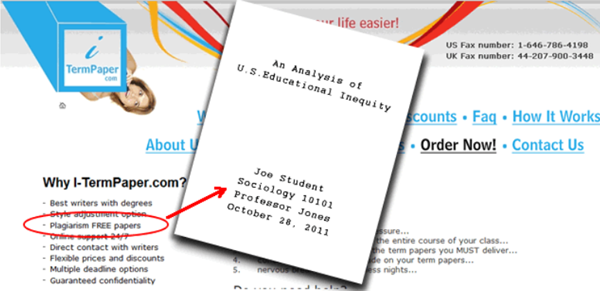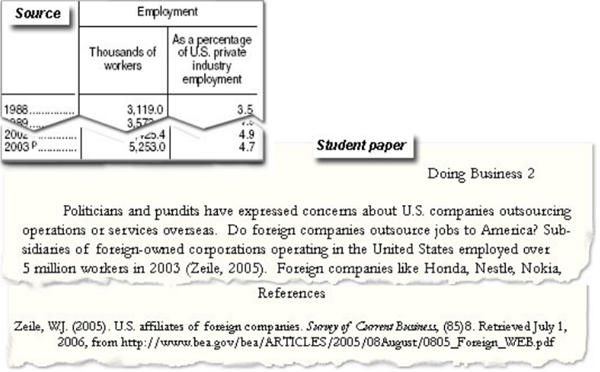Exercise: Identifying Citations
1.Joshi, M. (2013). Inclusive institutions and stability of transition toward democracy in post-civil war states. Democratization. 20(4), 743-770.
A. Journal Article
B. Book
C. Book Chapter
2. Janney, Caroline E. Remembering the Civil War. Reunion and the Limits of Reconciliation. Chapel Hill. North Carolina: 2013. Print.
A. Journal Article
B. Book
C. Book Chapter
3. Blattman, Christopher and Edward Miguel. Civil War. Journal of Economic Literature 48.1(2010)3-57. Print.
A. Journal Article
B. Book
C. Book Chapter
4. Barney, William L. “Rush to Disaster: Secession and the Slaves Revenge.” Secession Winter: When the Union Fe l Apart. Robert J. Cook William L. Barney and Elizabeth R .Varon. Baltimore: Johns Hopkins University Press, 2013. 77-96. Print.
A. Journal Article
B. Book
C. Book Chapter
5. Cooper, W.J.(2012)e have the war upon us The onset of the Civil War, November 1860-april1861. New York: Alfred A. Knopf.
A. Journal Article
B. Book
C. Book Chapter
6. Cockrell, T (2013). Patriots or Traitors Unionists in Civil War Mississippi In M.B. Ballard(Ed ),Of times and race: Essays inspired by John F. Marzalek(p 23-35). Jackson, Mississippi: University Press of Mississippi.
A. Journal Article
B. Book
C. Book Chapter
How Much Do You Already Know?
7. Why is proper citation of a source necessary?
A. To make sure you avoid plagiarism
B. To give the people reading your paper the information necessary to find the source you
C. To help connect your research to other scholars
D. All of the above
8. From the following, what basic piece of bibliographic information is missing for a citation of a chapter of a book?
Author, Title, Publisher, Date of publication
A. Place of publication
B. Author and title of chapter
C. Pages of chapter
D. All of the above
9. From the following, what basic piece of bibliographic information is missing for a citation of an article? Author, Title of Article, Volume number, Date of publication, Page numbers.
A. Title of journal
B. Issue number
C. Place of publication
D. Both A and B
10. The same basic bibliographic information is needed for a citation of a source in the MILA, APA, and CSE style formats.
A. True
B. False
Test Yourself: What Have You Learned?
11. Other than avoiding plagiarism, why is it important to cite sources accurately?
A. To acknowledge the research of the scholars who made your work possible.
B. To establish credibility of your research.
C. To connect your research to the work of other scholars.
D. All of the above.
12. What can be a problem when relying on online citation tools?
A. They may not format the citation correctly.
B. They are too expensive.
C. Information from the library catalog or an online database can export incorrectly.
D. Both A and B.
13. What information is missing from the citation of this journal article?
Endo, Tetsuya, Susan Bryant, and David M. Gardiner. "A Stepwise Model System for Limb Regeneration. 270(2004): 135-145. Academic Search Complete Web. 28 Feb 2012.
A. Volume and issue number
B. Title of journal
C. Title of article
D. Nothing is missing
14. When citing a source you retrieved online, all you need is a Dol or URL.
A. True
B. False
15. Which information sources are best to use for your research assignment?
A. Scholarly books and articles
B. Blogs and website articles
C. Any article as long as it comes from Google Scholar
D. All of the above
16. What information is missing from the citation of a book chapter?
Greenhalgh, S (2004) Making up China black population unplanned children]. In S.Szreter, H. Sholkamy & A. Dharmalingam (Eds.) Categories and contexts: Anthropological and historical studies in critical demography (pp. 148-172) Oxford, England.
A. Title of book
B. Title of chapter
C. Page numbers of chapter
D. Publisher
You tell us-is it plagiarism?
17. Using this website

A. No, it's an original paper, guaranteed plagiarism-free
B. Yes, because Joe Student purchased a paper and handed it in as his own work
18. Using this text

A. No, it's not plagiarism. Joe Student did not copy the text word for word. Besides, Amazon is not a “real" author.
B. Yes, this is plagiarism because Joe Student used someone else’s ideas and words without giving them credit.
19. Using this information

A. No, it's not plagiarism. Credit to the source is given in both the text and the list of references.
B. Yes, this is plagiarism. Joe Student did not use quotation marks.
Test Your Knowledge about Citations
20. Which is the correct citation for this article

The proper way to cite an article from an online database in APA style is: Author (year). Article title.Journal Title. Volume number (issue number), pages Retrieved (date) from (database name).
A. Done, T., Ellison,J., & Finlayson,M.( 2004). Coastal& marine Ecological Management Restoration, 5(3), 214. Retrieved July 20, 2006 from the Academic Search Premier database.
B. Done, T., Ellison,J., & Finlayson,M.(2004).Ecological management & restoration. Coastal& Marine, 5(3), 2. Retrieved July 20, 2006 from the Academic Search Premier database.
21. Which is the correct citation for this article:

The proper way to cite an article from an online database in MLA is: Author(s)."Title of Article. Title of Journal Volume. Issue (Year): page numbers. Database name. Web. Date accessed. [ Note: MLA normally double-spaces citations; these examples are single-spaced to fit a small area].
A. Nixon, Leslie B "Playoff or Bust: The Bowl Championship Series Debate Hits Congress (Again).” St. Thomas Law Review 21.3(2009): 365-389.Expanded Academic ASAP. Web12 AUg.2011.
B. Nixon, Leslie B (2009). Playoff or bust: the bowl championship series debate hits congress(again)"St. Thomas Law Review" Volume 21, page 365.
Questions
22. APA and MLA style guides both refer to:
A. Library classification systems
B. Databases covering fashion journals
C. Guides to using ca numbers
D. Formats for citing sources used in a paper.
23. Which of the following is not plagiarism?
A. Borrowing the idea or opinion of someone else without giving the person credit.
B. Summarizing an author’s main point and citing the source, giving credit to the original author.
C. Restating or paraphrasing a passage without citing the original author
D. Borrowing facts or statistics that are not common knowledge without proper acknowledgment.
24. All of the following statements about copyright are true except one. Which one is FALSE?
A. Copyright law protects the right of an author, artist, designer, or performer to earn income and recognition for creative works.
B. You violate copyright when you fail to get the copyright holders permission to email copies of an article to all of your classmates.
C. Anyone who creates an original work -including books, articles, music, computer programs, artwork, movies, videos, choreography, or architectural designs has legal protection under U. S. copyright laws.
D. An original work must be registered with the Copyright Office in order to be protected under U. S copyright laws.
25. You are analyzing a book for a history class and you jotted down an excellent description of the book written by a historian. You lost the citation, so you reorganize the words of the historian and include then in your paper without a citation. This is:
A. Plagiarism, because you are using another person’s ideas without giving him or her credit.
B. OK to do, because you are using his ideas but not his actual wording.
C. OK to do, because the description of the book is common knowledge.
D. A copyright violation because you did not get permission to use the historian’s ideas.
26. Using someone’s words without citing the original author is not considered plagiarism as long as you reorganize or paraphrase the words.
A. True
B. False
27. Which is a violation of copyright?
A. Emailing copies of an article to all of your classmates without permission of the copyright holder.
B. Downloading popular music that was put on the Internet illegally.
C. Making copies of commercial software or music to give to your friends without permission.
D. Downloading images to use on your own web site without permission of the copyright holder.
E. All of the above
Answers
1. A
2. B
3. A
4. C
5. B
6. C
7. A
8. D
9. D
10. A
11. D
12. D
13. B
14. B
15. A
16. D
17. B
18. B
19. A
20. A
21. A
22. D
23. B
24. D
25. A
26. B
27.E

